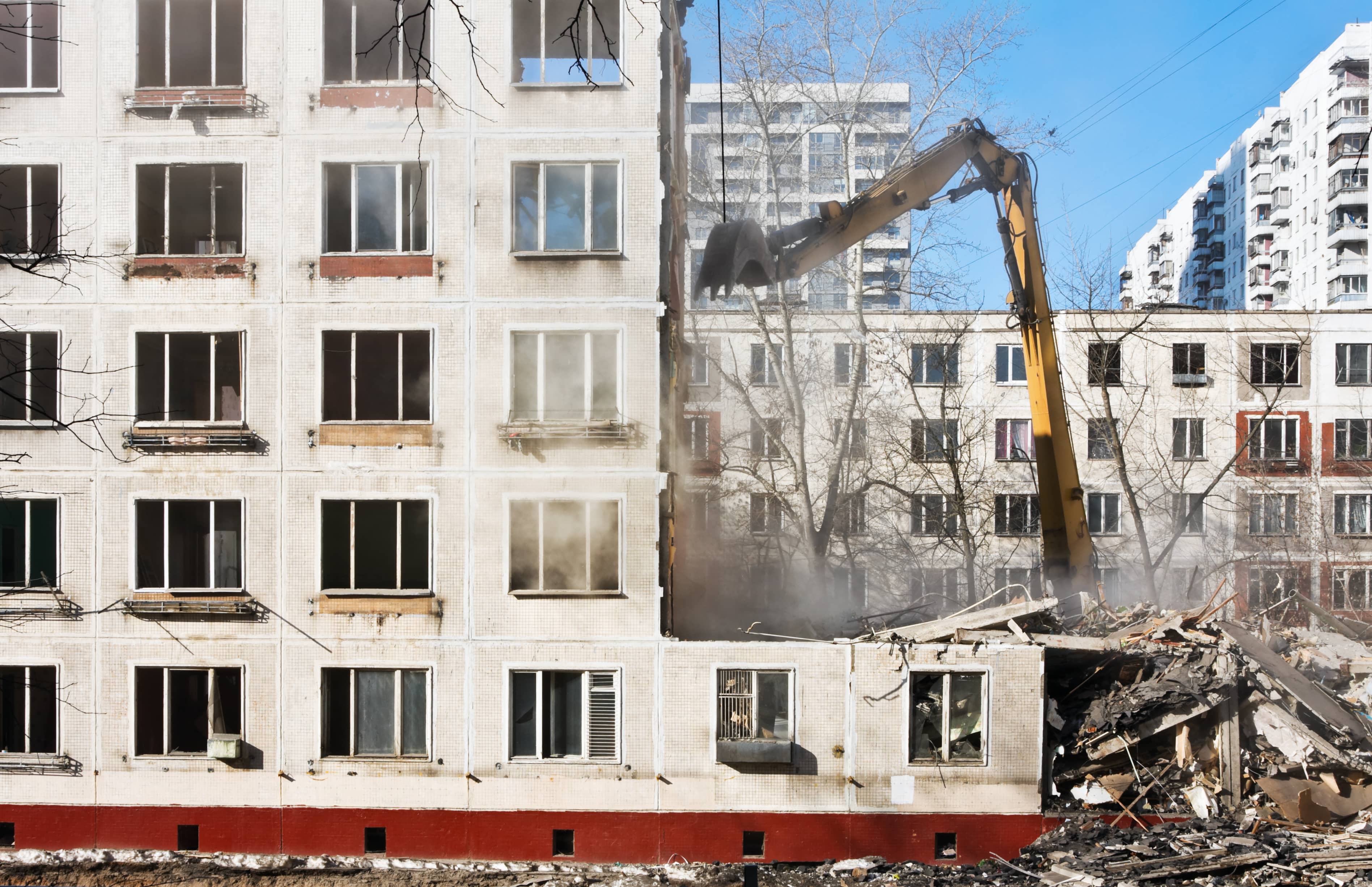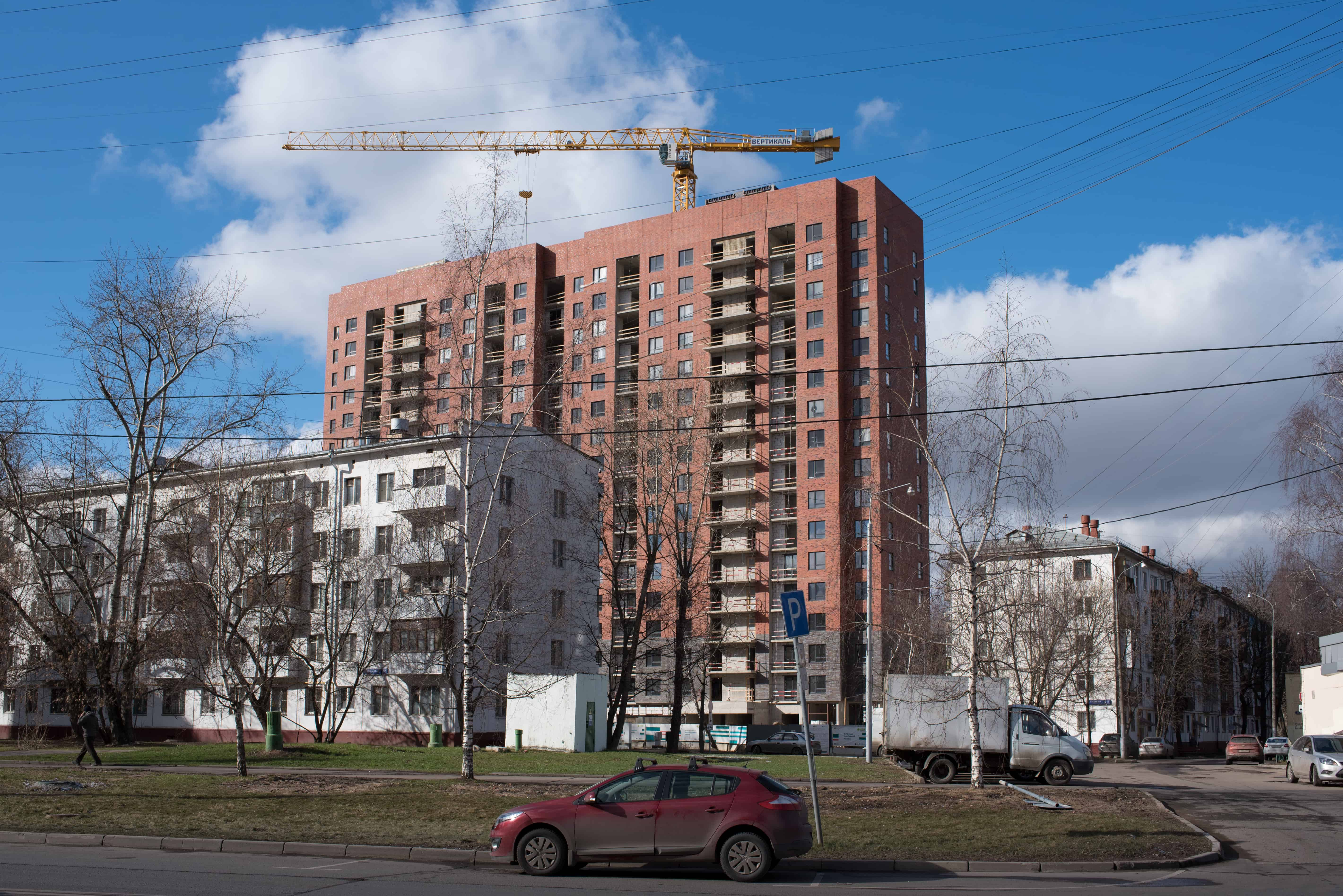Russian mass housing situation
Mass housing in Russia was created during the Soviet period from 1960 to 1980 in response to the acute housing shortage. The newly developed industrial technology of housebuilding made it possible to build housing quickly and cheaply, thanks to which residents received affordable housing in a short time. Over the years of operation, these standard houses have been worn out and no longer meet modern requirements for comfortable housing.
Challenges and opportunities of the renovation
In response to the current challenge, in Russia, a renovation programme is being discussed. The creation of a renovation program without demolition, based on ESG principles, will solve the systemic problem of caring for the environment, building social well-being and transparent management.
Potential renovation challenges

© Oleg Doroshin
Carbon footprint
The calculations are based on studies (1, 2) on the embodied carbon emissions caused by construction works and relate to the amount of new housing that could be built on the site of 1000 typical five-storey houses with four staircases after their demolition without increasing building density. In addition, the calculations take into account the emissions associated with demolition works on existing houses.
The construction industry is one of the key sources of СО₂ emissions. Demolition of existing housing and subsequent new construction contributes to the increase of the volume of carbon dioxide emissions. In the context of the global agenda to fight climate change, renovation should provide opportunities to minimise impact on the environment.

© Anna Nikonorova
Disrupted social cohesion
The calculations are made for typical five-storey houses with four staircases and take into account the data on the proportion of Russians who know their neighbours (VCIOM survey) and the average number of residents per staircase of a five-storey building. The calculations are based on the assumption that every respondent who reported knowing their neighbours knows at least one neighbour and therefore shows a minimum number of ties.
Mass housing has historically been unsuccessful in achieving social coherency in the short term, but after many years people are able to develop them even in such districts. Renovation should facilitate and enforce such connections. Comfort of residents should be the priority in a renovation programme.

© Irina Burmistrova
Lack of local involvement
The share of residents is taken according to the average value of the indicators "Share of citizens who took part in solving the issues of urban environment development" presented in the reports published by Russian regions on the implementation of relevant state programmes for the year 2020.
Commonly, residents of the renovated areas take only a minimal part in the process of planning their future. Renovation should promote the involvement of citizens in the process of urban development and give them the opportunity to define the image of the areas in which they live.
ESG as a new approach to renovation
Environmental

Clean air and water, an abundance of green spaces, healthy soils and high biological diversity are the main components of an environmentally sustainable city, ready for the challenges of global climate change. The new approach to renovation will create conditions for the efficient use of available resources, as well as ensure minimal environmental impact both during the renovation of buildings and during their further operation.
ENVIRONMENT KEY TARGET
Reduction of the carbon footprint
Carbon emissions could be cut by up to 65%The calculations are based on studies dedicated to the assessment of the embodied carbon footprint of refurbishment of the existing buildings (1) and construction from materials produced from renewable resources such as timber (2) during housing renovation without demolition
Social

Comfortable living, working and recreation conditions, as well as maintaining and strengthening social ties among the residents of the districts are key components of social well-being. Social cohesion and quality of life are the two key elements to take into consideration while measuring the social impacts of a renovation programme. The programme aims to make it possible for people to stay in their current residences and at the same time improve their urban environment in order to improve their quality of life.
SOCIAL KEY TARGET
Improvement of life quality and maintenance of social cohesion
Governance

Citizens should be the initiators and main beneficiaries of urban changes. To do this, it is important to develop local self-government, which will allow residents to participate in the development of the urban environment, receiving financial and non-financial benefits. The new approach to renovation will create transparent mechanisms and tools that stimulate renovation and subsequent economic development of territories that meet the interests of citizens.
GOVERNANCE KEY TARGET
Local involvement in the renovation process and the resulting benefits.
Up to 60% The calculations are made based on benchmark analysis of participatory planning renovation in European countries adjusted to the level of Civic engagement in Russiaof residents in districts to be renovated could participate in the development of their neighbourhood
ESG renovated street view
Example of 1-510 housing series renovation

ESG renovated courtyard
Example of 1-510 housing series renovation

ESG‑Renovation Programme Overview
Based on the ESG model the set of sub‑principles and solutions were developed to highlight the potential effects of the new approach on renovation towards the environment, the social and the governance.
Principles
By definition a principle is a set of basic ideas or rules that explain or control how something happens or works. In this case a set of environmental, social and governance rules that will allow the renovation programme to be successful.
Solutions
By definition a solution is the answer to a problem. In this case they are a set of practical applications to be applied in the existing buildings in order to achieve a successful renovation.